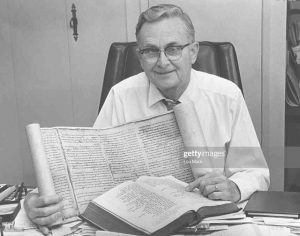Seis em cada 10 jovens norte-americanos não conseguem encontrar o Iraque em um mapa…
Pesquisa revela que jovens americanos “ignoram” resto do mundo
Embora a região de Darfur e o Sudão tenham aparecido com frequência no noticiário dos Estados Unidos, mais da metade dos jovens americanos não sabe que o país pertence ao continente africano nem, o que é pior, onde Nova York fica localizada no mapa.
Em uma pesquisa elaborada pela National Geographic com jovens entre 18 e 24 anos, 20% dos entrevistados situaram o Sudão na Ásia e outros 10% disseram que o país fica na Europa.
Mesmo com a Guerra do Iraque, apenas cerca de 37% dos jovens sabiam localizar o país árabe, onde se encontram 120 mil soldados americanos. A pesquisa foi realizada com 510 pessoas, entrevistas pelo Instituto Roper.
As conclusões do estudo, segundo os pesquisadores, é simples: os jovens dos EUA não estão preparados para um futuro cada vez mais globalizado. Segundo o diretor-executivo da Associação de Geógrafos Americanos, Douglas Richardson, os resultados ‘são alarmantes’.
Em 2002, a National Geographic elaborou uma pesquisa similar entre jovens de nove países — entre os quais França, Japão e México. Na ocasião, apenas os resultados do México foram piores que os dos Estados Unidos.
“É desalentador que tantos jovens dos EUA tenham tão pouco conhecimento sobre o resto do mundo”, disse Robert Pastor, vice-presidente de Assuntos Internacionais da American University, em Washington.
Nova York
A enquete revelou que os jovens americanos também desconhecem a geografia do seu próprio país. A metade dos entrevistados foi incapaz de localizar o Estado de Nova York em um mapa dos EUA, e um terço não soube dizer onde está Louisiana, o estado que sofreu com a passagem do furacão Katrina no ano passado.
Três em cada dez responderam que a população de seu país se situa entre um e dois milhões de pessoas, quando na realidade ronda os 300 milhões, segundo o último censo.
Segundo a pesquisa, menos de um terço dos jovens acha que é necessário saber onde estão os países que aparecem nas notícias, e apenas 14% disseram que falar uma língua estrangeira é uma ‘habilidade necessária’.
Dificilmente os jovens americanos encontrarão inspiração no presidente do país, George W. Bush, que, em um de seus discursos, disse aos alunos da universidade de Yale que passaram de ano raspando: “Não se preocupem, vocês também podem chegar à Presidência dos Estados Unidos”.
Globalização
Richardson considera que o conhecimento geográfico é essencial para adaptar-se a um mundo em constante globalização. “Agora necessitamos incluir as bases do conhecimento geográfico nos colégios”, disse.
A enquete também revelou outros dados positivos, como a percentagem de jovens que utilizam internet, que aumentou de 11% para 27% desde o estudo anterior, realizado em 2002.
A rede mundial de computadores parece atuar como uma “janela para o mundo” para os que navegam, porque os resultados foram melhores entre os jovens que acessam a internet.
Em oposição ao fraco índice de conhecimento geográfico, os jovens americanos demonstraram saber razoavelmente como utilizar um mapa para operações simples de navegação e citaram fatos da atualidade como a origem da gripe aviária na Ásia.
Fonte: Efe – Folha de S. Paulo: 04/05/2006
Six out of 10 young Americans cannot find Iraq on a map
The US may be the world’s only true superpower but global domination does not equal global knowledge. A new survey shows young Americans have what can only be described as shoddy geography skills, with six out of 10 unable to locate Iraq on a map and almost half incapable of pointing to the state of Mississippi.
Traditionally, the US has bowed to the idea of isolationism, hoping that geography in the form of vast oceans can help act as a protection from other nations. But the survey suggests that such an attitude- both culturally and in terms of interest in overseas travel – is having a woeful impact on Americans’ ability to learn about the wider world.
The survey shows that, despite having invaded Iraq three years ago, six out of 10 Americans aged 18 to 24 cannot locate the country. Two-thirds do not know that the October 2005 earthquake that killed 70,000 people struck in Pakistan. Indeed, more than 40 per cent cannot locate Pakistan in Asia.
But it is not just overseas knowledge that is lacking. The survey shows that domestic geography is also poor. Despite the chaos caused by Hurricane Katrina, which killed hundreds of people and cost billions of dollars when it struck the Gulf Coast last August, one-third of those questioned were not able to find Louisiana on a map of the US. When asked to point on a map to a location that avoids hurricane strikes – ie, the north-west of the US – around a third pointed in the wrong direction.
“It’s not good … It shows the knowledge is pretty appalling,” said John Fahey, president of the National Geographic Society, which commissioned the survey. “I think this is born out of a sense that [people believe] ‘I can be isolated here – culturally and geographically. I don’t need to think too much about what’s happening in the rest of the world’.”
He added: “Geographic illiteracy impacts our economic well-being, our relationships with other nations and the environment, and isolates us from our world. Geography is what helps us make sense of our world by showing the connections between people and places. Without it, our young people are not ready to face the challenges of the increasingly interconnected world of the 21st century.”
The survey, carried out in December 2005, also found fewer than three in 10 think it is important to know the locations of countries in the news; only 14 per cent believe another language is a necessary skill; 47 per cent could not find India on a map and 75 per cent could not locate Israel.
While the geography skills of young Americans are unimpressive, however, they may be improving. A similar study carried out in 2002 found only 13 per cent could point to Iraq on a map. Almost one in 10 could not even point to the United States.
That survey also found that young people who have travelled abroad and speak another language are likely to have better geography skills than those who do not. Young adults who obtained international news from newspapers as opposed to television alone were likely to score better, as were respondents who regularly used the internet.
The National Geographic Society has released the results of the survey to coincide with a campaign to improve “geographic literacy”. Entitled My Wonderful World, and led by a group of business, non-profit and education leaders, the aim is to highlight ways that children and parents can help build geography skills.
Central to the campaign is a website at www.Mywonderfulworld.net which contains suggestions for outdoor family activities, links to geography games and classroom materials.
Fonte: Andrew Buncombe -The Independent: 3 May 2006



